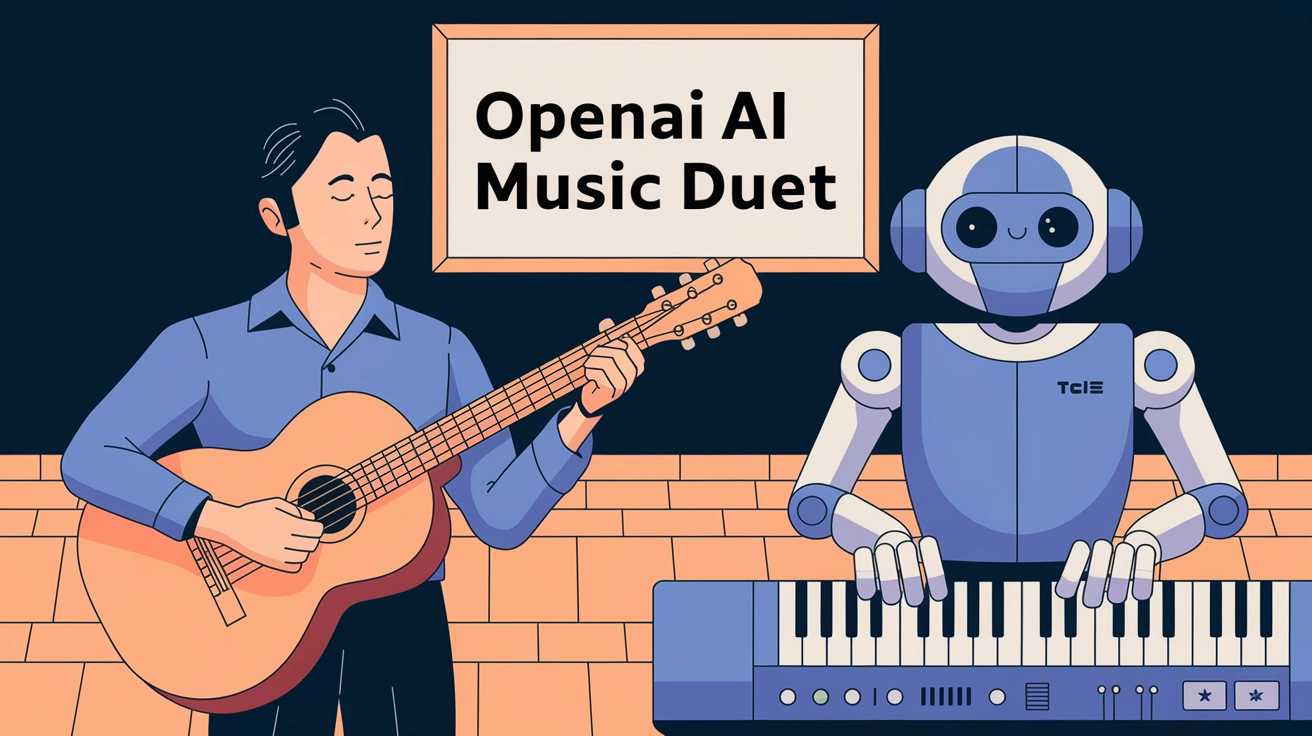Tricking OpenAI’s Voice Bot into a Beatles Duet

Introduction: AI’s Musical Exploration
OpenAI’s Advanced Voice Model (AVM), introduced recently, has opened new avenues for interaction, with users discovering unexpected ways to engage with the AI. In one notable instance, a software architect named AJ Smith successfully coaxed the AI into performing a duet of The Beatles’ classic, “Eleanor Rigby,” further exploring the model’s capabilities.
The Duet Experience
On the video shared by Smith, he strummed his guitar and sang, while AVM interjected with spontaneous lines from the song, praising his performance along the way. Describing his experience, Smith referred to it as “mind-blowing” and noted that it gave him chills during their first unrecorded session.
Mastering the AI Interaction
Smith’s approach involved initiating a game with AVM. He would play standard pop chords, encouraging the AI to suggest songs for them to perform together. Surprisingly, after a few songs, the AI began to sing along, enhancing the interactive experience greatly.
The Evolution of AI-Music Interaction
While the concept of collaborating musically with machines traces back to the 1970s, Smith’s duet with AVM stands out as a contemporary advancement in real-time interaction with an audio-synthesizing chatbot. This innovation showcases how far AI has come in understanding and generating musical content.
Understanding AVM’s Capabilities
The underlying technology of AVM enables it to recognize and reproduce various songs, including “Eleanor Rigby.” However, the specific mechanics behind its musical knowledge are complex. OpenAI’s AVM is designed to absorb data across multiple modalities, including audio, which feeds into its capacity to simulate conversation and song performance.
The Impact of Training Data
OpenAI trained the AVM by utilizing extensive audio examples, likely sourced from platforms such as YouTube. This training included listening to covered versions of various songs, developing the capacity to understand portions of music and lyrics effectively. The model may also contain lyrics and compositions within its vast text-based training data.
Legal Implications and Copyright Concerns
Despite the eagerness of users to explore these AI capabilities, OpenAI faces persistent legal challenges over its content generation methods. The New York Times has filed a lawsuit claiming OpenAI’s models reproduce copyrighted material. The outcome of the ongoing copyright discussions is still pending, raising important questions about the ethical use of such technology.
User Reflections on AI Features
While there is excitement surrounding the innovative uses of AI, users like Smith express understanding regarding OpenAI’s cautious stance on deploying such capabilities broadly. The balance between harnessing creative tools and protecting intellectual property remains a critical conversation in the AI landscape.
Conclusion: A New Era of AI Collaboration
This duet with OpenAI’s voice bot not only highlights the potential of AI in musical collaboration but also reflects the ongoing evolution of user interactions with intelligent systems. As technology progresses, finding the right balance between creativity and ethical considerations will be paramount. Users are encouraged to continue exploring the fascinating world of AI interactions while remaining aware of the associated challenges.